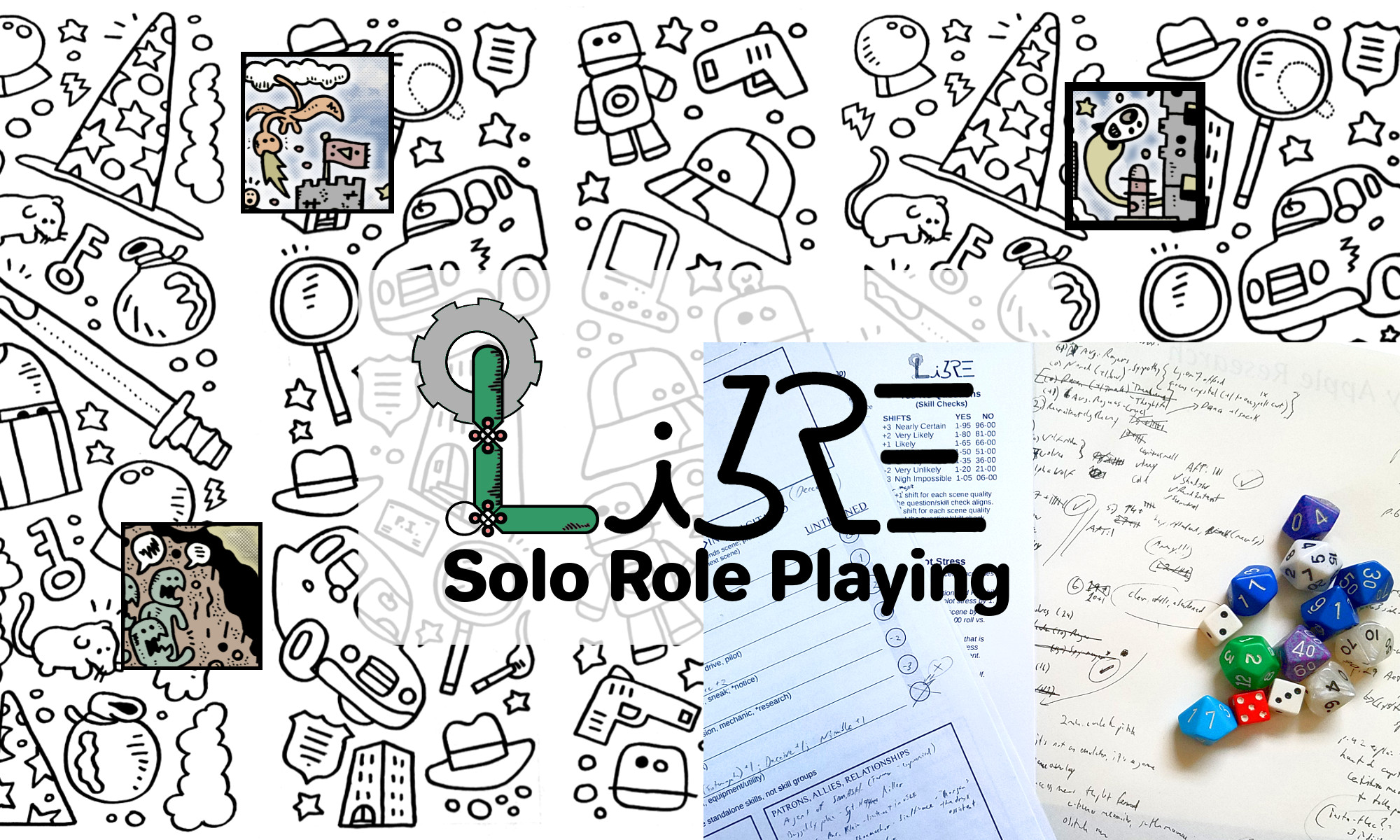I have the good fortune to play RPGs with a mix of veteran grognards and younger players who live here in the greater Boston area (yay Boston). That includes gamers who’ve been GMing and evolving the same worlds for decades, published tabletop game designers, video game designers, writers, editors, lawyers…
In early 2017, I’d already been tinkering with Libre Solo Role Playing for a while, and word about the manuscript came up in the gaming group. A wise gamer asked this question: “what’s in it for the player?” His point: In D&D, for example, there’s a subtext to the game that players kill monsters and take their stuff, gain experience and become more powerful, to kill bigger monsters and take their stuff… and so on. Some RPGs are just simulators that don’t have obvious progression or inherent victory conditions.
So, to answer “what’s in it for the player?” There are a couple reasons Libre SRP exists. One of them is that lots of us gamers have dozens of systems or settings that we personally love. Many of them rarely see face-time in a game group. Don’t get me wrong, in-game face time is the best! But it takes a lot of coordinating in real life to get people together, and session with some problem-solving and an encounter or two takes three or four hours of play.
Another reason why Libre SRP exists is that group gaming means group compromise. One player lives for combat encounters, someone else loves a good story, a third is there for the morality play, a fourth wants loot and glory. Most anyone who’s played RPGs has heard about the Leeroy Jenkins effect. Somebody insists the group should talk to the galactic emperor’s emissary; negotiations get broken off when another player character decides s/he’s bored and lights up everybody with a plasma cannon.
Libre Solo Role Playing lets you tell the stories you want, in your way.
One key to the game: You can immerse yourself in character and setting. If you want a story with mystery and intrigue, or want a story with action and adventure, or want a story that focuses on interpersonal relationships, you lay out the challenges and aim to overcome them. What’s more, you can play (and tell) a short story from start to finish in as little as an hour, sometimes much less — all you need are dice, pencil and paper, printouts of the action and mission sheets, a block of uninterrupted time and a quiet place to concentrate.
Let the world challenge your character with obstacles to overcome, plot twists, setbacks and surprises.
There are many GM emulators out there. Pretty much all of them have the same flaw, which I’ll describe as laying tracks in front of the train while it’s running. Another way to put it is that other GM emulators are stateless. They don’t take into account what’s happening in a scene, good or bad, or where that leaves the protagonist. This leads to another key to Libre Solo Role Playing. Your protagonist has an overall story goal, and your challenges and resources are structured. Each scene, the player sets scene goals to move the story closer to resolution. To stretch the train analogy, in Libre SRP the player’s plan will go off the rails: but the train tracks are still there, and the next station is still visible in the distance. A large part of the game is about taking risks and recovering gracefully from consequences, setbacks and blowback.
Scene qualities are magic.
Another big missing piece from GM emulators is that they don’t touch game atmosphere. Solo RPG enthusiasts sometimes end up bolting on window dressing manually, though it’s possible to get buried under an endless sea of random tables (sadly, Tim Ballew’s awesome DungeonWords and WilderWords pocketmods seem to have disappeared from the Internet). Libre SRP’s answer: Make atmosphere – in the form of people, items, descriptors, places and atmosphere – a key part of the game. Put bonuses on players’ ability to engage with key scenery, their use of equipment and ability to leverage NPC personalities. Use all the elements in a scene in creative ways, both to generate skill challenges and to resolve them.
Again, “what’s in it for the player?” Well, you can build a character and select a setting; import a ruleset of your choice if you want. Put your character through his/her paces, beat them up and see if you can win. Succeed or fail, you’ll tell an interesting story along the way. Interacting with scene details is vital to success. Build networks of NPC relationships over time that make each successive story that reprises the same player character potentially deeper and more meaningful. Build up your characters’ experience over time.
It’s all that. But most of all it’s about telling the stories you want, in your way.
